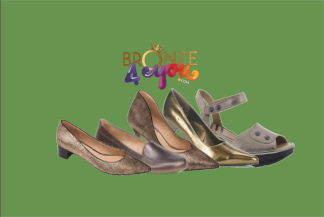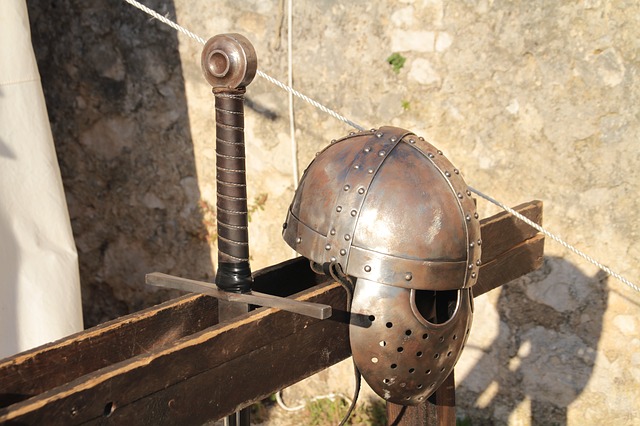
Human beings have always used tools to find their food both by growing and hunting. Also, they often used the same tools as weapons to protect themselves from animals and enemies. They developed technology and metallurgy and improved their weapons during the Bronze Age.
Let’s make a little history and we will transport ourselves mentally to that time. The man hunted animals to eat and as time passed the cities were emerging. The desire for power and dominance led to man invading other territories, cities and therefore the need to protect themselves from these invasions. At that time the fight was usually meleeing, so the weapons were mostly manual.
Before the Bronze Age
According to historians, in the prehistoric era, man used as weapons and tools simple sticks, stone weapons, wooden spears, and simple slings.
In Africa, we find some cave paintings that show men armed with sticks and other sharp weapons reminiscent of maces.
The maces originated from clubs that were initially made of wood and later made of metal. The blacksmiths began using copper and bronze to improve their quality. The maces were widely used by the Celts and other North African tribes.
The wooden axes used to cut wood were then forged in bronze. They were mostly used in Europe and Asia. And the weapon they used was the sling, but with the discovery of copper, they began to use bows, arrows, and spears.
In China, wooden canes were used effectively to fight enemies. A stone was tied to the top of the cane and was used as a weapon. The Indians used comparatively smaller wooden axes in size, lighter and easier to use, and most of these weapons were used for hunting.
One of the oldest weapons is the spear. This consists of a long wooden pole attached by a thread to a pointed blade. The pointed blade at the beginning was made of sharp stone. Then during the Metal Age, they began using copper. But since bronze turned out to be harder and sharper metal, they replaced copper with bronze.
The Bronze Age and Weapons
What motivated that change? If we analyze, a stone tool or a stone weapon is inflexible and can break. The use of bronze brought a significant change in the culture of that society. Among the main benefits is that unlike stone, bronze could melt. In this liquid state, it was spilled on clay or stone molds to make multiple elements at once. In addition to being able to mold it, stretch it and fold it without breaking or cracking. Giving them the freedom to invent new styles of weapons more and more efficient. From a blade emerged the long bronze swords.
The blacksmiths were changing their way of working, such as hammering to give different shapes to bronze axes, bronze blades, bronze swords and spears with their bronze tips. In addition, these were polished giving an appearance similar to that of gold, very bright.
Treasures in China
Terracotta Warriors
We can know all those details, of what happened in such a distant past, thanks to the arduous work of archaeologists in their excavations. One case is a treasure discovered in China in 1974. It is the mausoleum of Emperor Qui Shi Huang. There they found more than 7,000 life-sized terracotta warriors buried with their emperor in Xi’an. And in 1980, two bronze carriages carried by four horses were discovered.
In 1700 BC, in the Bronze Age in China, during the Shang dynasty, metal was used for large ritual cauldrons and vessels decorated for ceremonies and ancestor worship. But the appeal of military power was irresistible. When Emperor
Qui Shi Huang died, in 210 a. C was buried with an army of 7,000 life-size terracotta warriors. He believed that he would continue to have troops under his command that way. Each of these figures has different features and characteristics: mustaches, hairstyles, young, old, features of different ethnicities. All are equipped with their complete bronze weapons and battle equipment. The weapons included tens of thousands of bronze arrowheads, axes, spears, crossbows with bronze triggers and bronze swords.
Chinese Bronze Sword
Sword Goujian’s
In 1965, while an archaeological study was conducted along the second main aqueduct of the Zhang River reservoir, a series of tombs were discovered Ancient in Jiangling County. More than 2,000 artifacts were recovered from the sites, including an ornate bronze sword, found inside a coffin along with a human skeleton. The sword was found sheathed in a wooden sheath finished in black lacquer. The sheath had an almost hermetic fit with the sword’s body. Unwrapping the sword revealed an intact blade, even though the tomb was submerged in groundwater for more than 2,000 years.
Chinese bronze bowls and ritual weapons show advanced degrees of bronze art. The large cauldrons are carved and cut individually. Weapons are mass-produced in standardized batches, handmade according to precise specifications by groups of shops or craft factories. From the Zhengzhou excavations between imposing walls and large buildings, bronze foundries were found. Everything indicates how important bronze was in the Bronze Age in China.
The constant use of bronze with a high tin content (17–21% tin) is also unique for Chinese bronzes, which makes it very hard and breaks if it gets too tight, while other cultures prefer lower tin bronze (usually 10%), which bends if it gets too tight… Although iron swords were manufactured along with bronze swords, it was not until the “early Han” period that iron completely replaced bronze.
You may also like…
Bronze swords
Among the weapons mentioned are bronze swords. If we watch movies based on stories from the ancient world we can see that it was in everyday use. The sword is, at first sight, a dagger or a long knife with a pointed tip and with a hilt. Like the knife, some swords have a single-sided edge. Others are like daggers that are sharp on both sides of their blade. The construction of longer blades was possible during the third millennium BC in the Middle East, first in arsenic copper, then in tin bronze. The bronze swords could not be made with more than 60 cm. Although bronze was a harder metal than copper, it was not enough for such a long sword. It was folded many times.
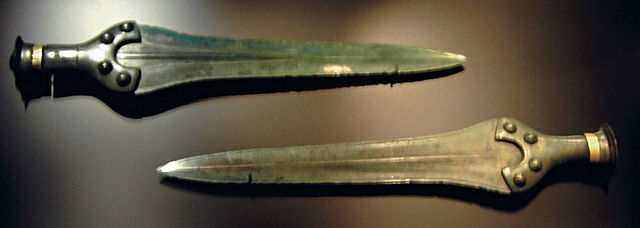
The first weapons that were classified as swords are those found in Minoan Crete, dated from 1700 BC. C. These have a total length of more than 100 cm. These are from the Aegean Bronze Age.
In the Bronze Age of Europe, one of the most important swords was the Naue II type. It arises in Italy in the 13th century BC. It survived for 7 centuries. This sword model expanded from southern Europe to the Mediterranean. They could measure up to 85 cm but most measured in the range of 60 to 70 cm.
Together with the swords, the pods were manufactured. The sheath is the protective cover on which the sword rests. The sheath has been made of various materials, including leather, wood, and metals such as bronze.
Bronze Axes
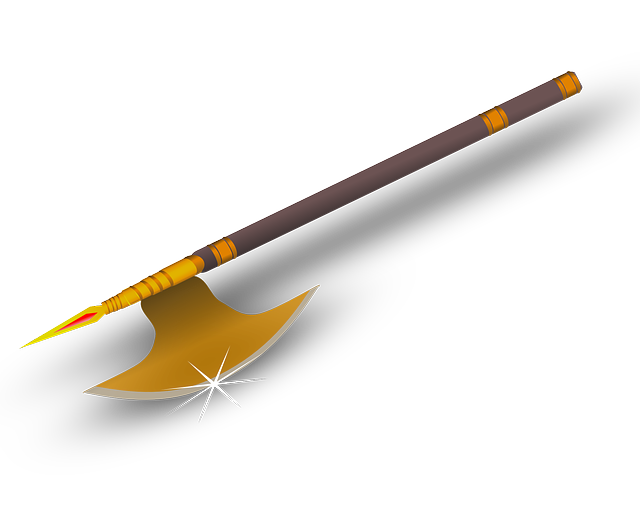
The first bronze axes had a blade stuck in the handle, but later weapons were thrown as a solid piece, reducing the risk of breakage. The bronze ax fulfilled both a functional and military function. In daily life, the ax allowed people to clean more land to grow and gather wood for construction. In the war, it served as a heavy stick and a blade. However, the first bronze axes were very impractical, they separated from the wooden handles due to the impact pressure. Soon, metallurgists designed an ax that did not need to be tied to the handle. Instead, they throw their heads with a hole in the middle. The new handle was adjusted through the hole and the craftsman nailed the two pieces together, making a tool and weapon strong and durable.
Bronze Shields
The shields are made of a sheet of bronze with a high tin content: copper with 11-14% tin. They are round with central dome created by hammering from the back. The decoration was formed by hammering from the reverse (Repoussé). The impressive shields were used to indicate high social status.
Bronze Armor
The use of bronze armor and helmets varied from culture to culture. While the Greeks wore helmets and flexible armor made of overlapping plates called panoply, the Egyptians avoided using it for common soldiers. This decision was probably related to extreme heat in the region since the metal that covers the body could cause extreme heat exhaustion and death.
In northern Europe and Scandinavia, the Bronze Age inspired the use of elaborate metal helmets adorned with long and threatening horns.
The most notable finding of a complete bronze armor composed of several elements. Traces approximately 1400a.C. The armor is composed of the following parts:
a) two bronze plates approximately 1 mm thick that protect the warrior’s torso;
b) two bronze shoulder pads (similar to but not equal to that of grave 8);
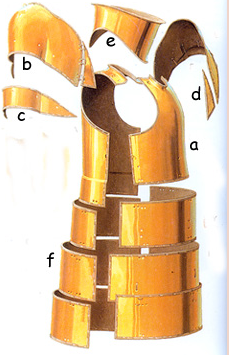
c) two pieces of curved bronze plates attached to the bottom of the shoulder protectors to protect the upper arms;
d) two triangular bronze pieces attached to the shoulder protectors for additional protection at chest level;
e) a bronze throat protector;
f) six bronze belts attached to the lower edge of the shell three in front and three behind.
Bronze Cannons
Now we pass the bronze age and the iron age as well, China around 1290 AD, where gunpowder and cannon were invented and used. The first Chinese cannons were made of bamboo, but then they began to make them of metal and the chosen metal was bronze. Cast iron and wrought iron were also known by the Chinese at this point, but it was discovered that the first metal cannons manufactured around 1300 AD were made of bronze.
Although bronze was more expensive than iron, the reasons for using it were probably because bronze is stronger than wrought iron and is not as fragile as cast iron. It is also easier to melt and is much more resistant to corrosion than iron. A relative of the cannon is the bombardment.
Bronze Falconet
In the fourteenth century began to use the falconets. They were basically small bronze cannons, whose main task was to cause damage to people. It was widely used, especially on boats. They were placed in a hole on the side of the ship and fired solid iron balls or a handful of arcabuz bullets.
Bronze Bombards
The bombards are considered the oldest portable weapons fire in history. It was a precursor to the cannon. It is a cannon or mortar used during the Middle Ages and the early modern period. They were mainly large-caliber artillery pieces, used during sieges to fire round stone shells at the walls of enemy fortifications, allowing troops to enter. Most of the bombardments were made of bronze or iron and gunpowder was used to launch the projectiles.
Interesting to mention that for the fifteenth century the artillery of the Ottoman Empire had large bronze bombards. They were different from the bombs mentioned above. These were built in two pieces, with a total length of 5.20 m and 16.8 tons in weight, threw 300 kg bullets at a distance of up to 1600 meters. The difficult operation, they were not portable, with a shooting capacity of no more than 15 daily shots. They were used on the site of Constantinople in 1453.
Advantages of Bronze Weapons
When firearms technology arrived in Europe, many were made of bronze. The bronze cannon continued to be used in the United States as well. In fact, during the Civil War, most of the artillery was made of bronze. While iron cannons were also invented, they decided to continue using bronze cannons for several reasons. Although cast iron weapons can withstand greater amounts of gunpowder and, therefore, have greater range, bronze cannons are lighter for the same caliber. Therefore, they were preferred since they could move more easily. And in ships, bronze firearms were preferred over iron, mainly because bronze does not corrode so easily in the presence of seawater.
Modern use of Bronze Weapons
In the nineteenth century “Gunmetal” began to be used, one of the strongest types of bronze used to make weapons. It was found that adding a little zinc to bronze improves its casting characteristics.
Interestingly, although the literature of the eighteenth and nineteenth centuries refers to brass firearms, many of them were actually made of bronze. Examples include the Henry rifle and several Confederate weapons, which are often mentioned to have brass frames, when in fact they are bronze.
While bronze was used for firearms for a long time, it was always more expensive than iron and less strong. With the rise of modern steelmaking techniques, it became possible for the steel to overcome the advantages that bronze had. This is the reason why bronze stopped being used for firearms.


